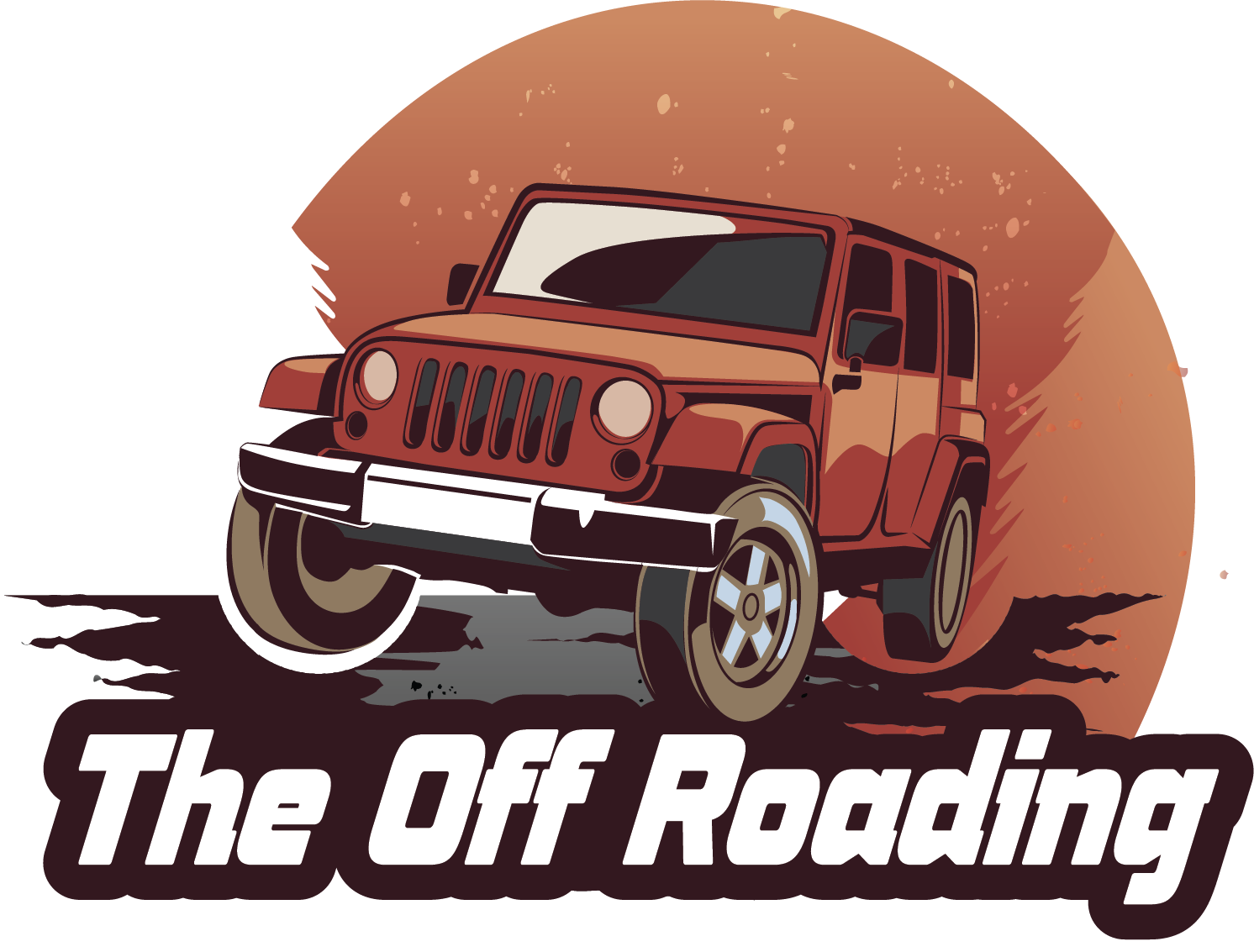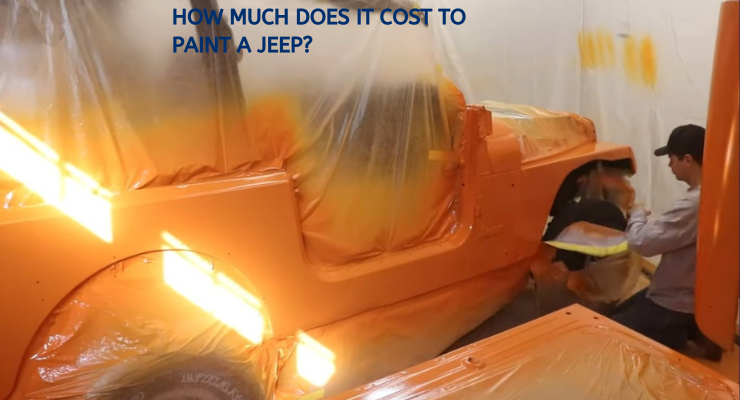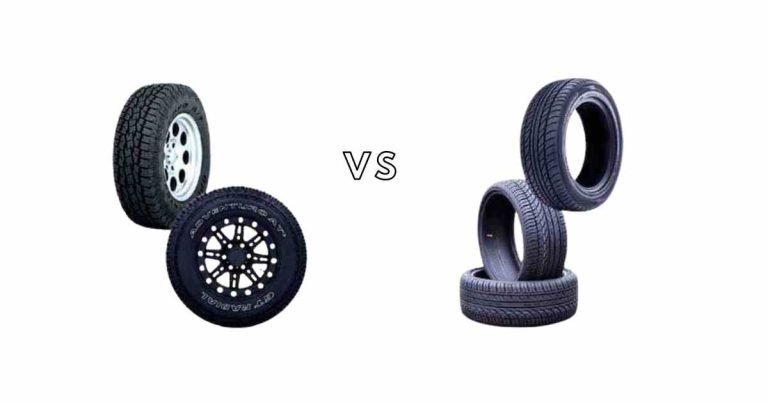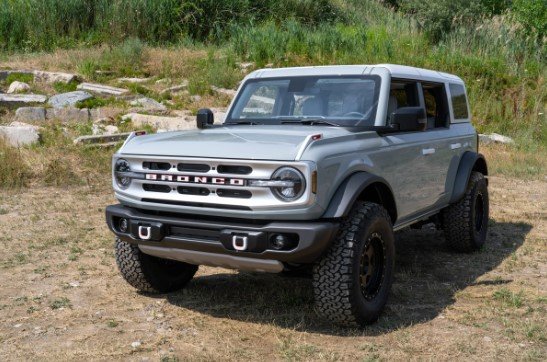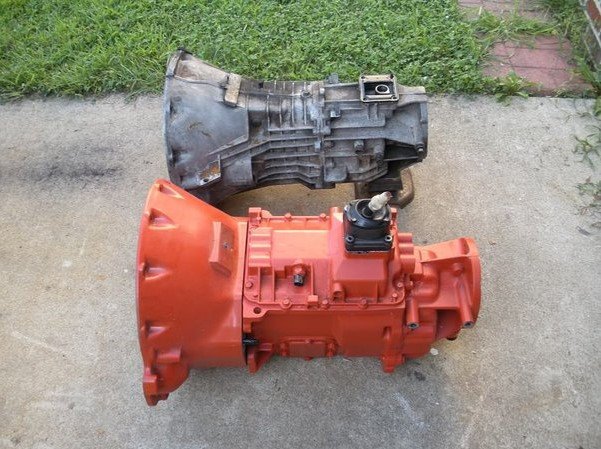2004 Jeep Wrangler Problems: Possible Causes And Fixings
The Jeep Wrangler has been a favorite amongst off-road enthusiasts for many years. While it is regarded as a reliable vehicle and an ideal choice for outdoor adventurers, it can have its fair share of problems.
So, what are the common 2004 Jeep Wrangler problems? Several factors can cause 2004 Jeep Wrangler Problems. These include
- Death Wobble
- Transmission Issues
- Electrical Problems
- Oil Leaks
- Rust and many others.
This article will explore some common issues that owners of the 2004 Jeep Wrangler have reported. By being aware of these problems, you can take proactive measures to address them and ensure a smooth ownership experience. Ok, let’s dive in.
2004 Jeep Wrangler Problems
The 2004 Jeep Wrangler is a popular SUV that has been known to have some problems. Here are a few 2004 Jeep Wrangler issues that some owners have reported.
A tabular form outlining common problems with the 2004 Jeep Wrangler, along with their causes and potential solutions
| Problems | Causes | Solution | |
|---|---|---|---|
| 1 | Death Wobble | Worn-out suspension components Loose steering components Imbalanced tires | Replace worn bushings and ball joints Tighten tie rods, track bars, or drag links Ensure proper tire alignment and balancing |
| 2 | Transmission Issues | Manual: Difficulty shifting gears Automatic: Slipping or rough shifting | Inspect clutch, synchros Check fluid levels |
| 3 | Electrical Problems | Faulty wiring or loose connections Worn-out electrical components | Inspect and repair wiring Replace malfunctioning gauges |
| 4 | Oil Leaks | Worn gaskets or seals | Replace faulty gaskets |
| 5 | Rust Issues | Worn gaskets or seals Exposure to moisture or road salt | Replace faulty gaskets or seals Regularly wash, wax, and apply rust-proof coatings |
| 6 | Fuel Tank Problems | Leakage or corrosion of fuel tank | Repair fuel tank or skid plate |
| 7 | Steering Component Wear | Ball joint or tie rod end wear | Replace worn components |
| 8 | HVAC System Malfunctions | Component failure | Replace malfunctioning HVAC components |
| 9 | Soft Top Issues | Wear, leaks, zipper failures | Replace damaged components |
| 10 | Sway Bar Link Problems | Failure or wear of sway bar links | Replace damaged sway bar links |
2004 Jeep Wrangler Common Problems with Their Solutions
Now, let’s discuss each problem in detail along with its possible causes and solutions.
- Death Wobble
The “Death Wobble” is a term used to describe a violent shaking or oscillation of the front suspension components, typically occurring at high speeds or after hitting a bump.
Causes
- Worn-out suspension components
- Loose steering components
- Imbalanced tires
Solutions
- Replace worn bushings, ball joints, or control arms with the help of a professional mechanic.
- Have a professional align the front end of your Jeep Wrangler. Ensure all components are properly positioned, tightened, and well-balanced.
- Tighten tie rods, track bars, or drag links.
This is the process to do that.
- Park your Jeep Wrangler on a flat surface and engage the parking brake.
- Place wheel chocks behind the rear wheels for added safety.
- Locate the tie rods, track bars, and drag links underneath the front end of the vehicle.
- Visually inspect the components for wear, damage, or looseness.
- If significant issues are detected, consider replacing the parts instead of tightening them.
- Secure the steering wheel in a centered position using a bungee cord or with the help of an assistant.
- Use a wrench to loosen the lock nuts on the adjustment sleeves of the tie rods, track bars, or drag links.
- Turn the adjustment sleeves clockwise to tighten them evenly.
- Tighten the lock nuts on the adjustment sleeves to secure them in place.
- Recheck the components to ensure they are properly tightened and secure.
- Test drive the vehicle to check for any remaining signs of the death wobble.
If the issue persists, seek assistance from a qualified mechanic or visit a Jeep dealership for further inspection and repair.
- Transmission Problems
Both the manual and automatic transmission problems in the 2004 Jeep Wrangler have had their fair share of reported issues. In manual transmissions, common issues include difficulty shifting gears, grinding noises, or a clutch that engages improperly.
Automatic transmissions exhibit problems like slipping, rough shifting, or delayed engagement.
Causes
- Low transmission fluid
- Dirty transmission filter
- Leaky seals
- Faulty solenoids, worn clutch packs, or internal transmission damage
- A bad gasket
Solutions
- Inspect clutch, synchros, or linkage for repairs (manual).
- Ensure that the transmission cooler is functioning properly and not clogged. Check the fluid level and top it up if needed. If the transmission continues to overheat, it may be necessary to upgrade the cooling system or address any underlying issues.
- Consult a professional for proper diagnosis and repair.
- Regular maintenance, including fluid changes, can help mitigate these issues.
- Have a qualified mechanic perform a diagnostic check to identify the specific cause of the issue. Depending on the diagnosis, the solution may involve replacing faulty solenoids, performing a transmission rebuild, or replacing the transmission altogether.
- Repair or replace a bad gasket. It’s important to fix fluid leaks promptly to prevent further damage to the transmission. Seek assistance from a qualified mechanic for this repair.
- Electrical Gremlins
Owners have reported electrical issues, including malfunctioning gauges, intermittent power loss, or electrical shorts. This problem can be frustrating and challenging to diagnose in any vehicle.
Causes
- Faulty wiring
- Worn-out electrical components
- Loose connections
Solution
- Secure connections.
- Have proper troubleshooting techniques or the assistance of a professional mechanic.
- Replace malfunctioning gauges or electrical parts as needed.
Here are the steps for replacing malfunctioning gauges or electrical parts in a 2004 Jeep Wrangler.
Step 1: Gather the necessary tools: socket set, screwdrivers, pliers, wire cutters/strippers, and multimeter.
Step 2: Identify the malfunctioning gauge or electrical component.
Step 3: Disconnect the negative battery terminal.
Step 4: Remove or unscrew or unbolt the cluster, and disconnect electrical connectors.
Step 5: Replace the malfunctioning gauge with the new gauge.
Step 6: Reconnect electrical connectors, and secure them with screws or bolts.
Step 7: Reconnect the negative battery terminal.
Step 8: Test the new gauge for functionality.
Step 9: Perform any necessary calibration or adjustments as per the manufacturer’s instructions.
Step 10: Verify proper operation of all gauges and electrical components.
Remember to consult the specific instructions provided by the gauge manufacturer or your vehicle’s manual for any additional steps. If you’re unsure or uncomfortable performing the replacement yourself, it’s advisable to seek professional assistance from a qualified mechanic.
- Oil Leaks
Over time, gaskets and seals in the 2004 Jeep Wrangler’s engine can wear out, leading to oil leaks. These leaks occur at various points, such as the valve cover, oil pan, or gasket surfaces. If left unaddressed, it decreases engine performance, oil contamination, and potential engine damage.
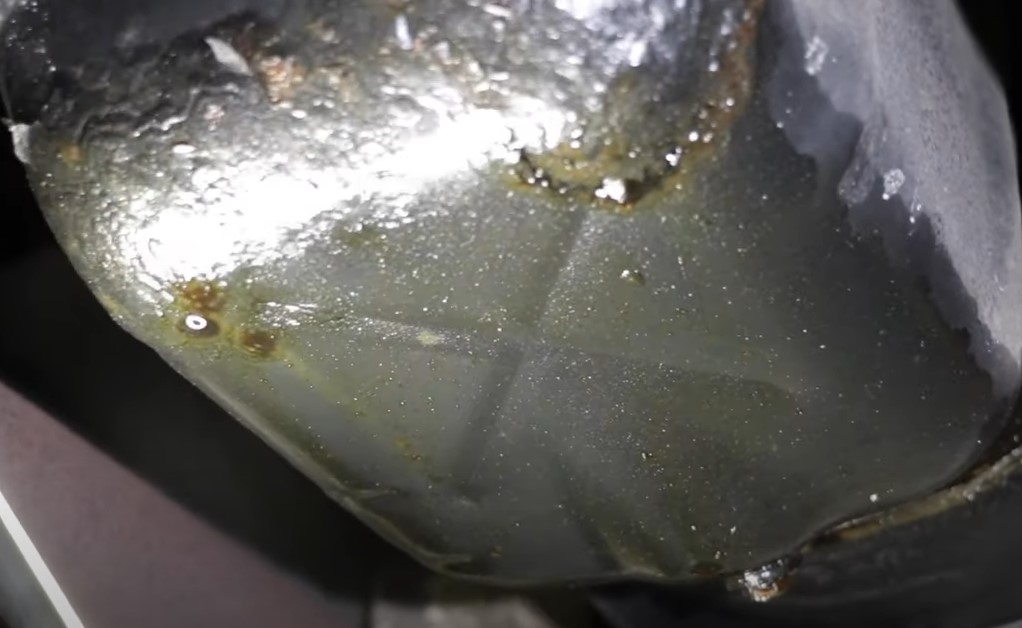
Causes
- Worn gaskets or seals
Solution
- Replace faulty gaskets or seals to prevent oil leaks. It’s best to visit an auto shop or a professional mechanic to fix this.
- Regularly checking the oil levels and inspecting for any signs of leakage can help you catch these issues early on.
- Rust Issues
The 2004 Jeep Wrangler’s rugged design and off-road capabilities make it susceptible to rust, especially in regions prone to corrosion. Some owners have reported rust, particularly in areas exposed to moisture and road salt.
Common rust-prone areas include the undercarriage, fender flares, frame, and body panels. Rust can weaken the structural integrity of the vehicle and lead to costly repairs if not addressed promptly.
Causes
- Exposure to moisture, road salt
- Lack of protective measures
Solution
- To fix rust issues, it is recommended to take the vehicle to an auto body shop that specializes in rust repair. The mechanic will assess the extent of the rust damage and determine the best course of action, which may include sanding, grinding, welding, and/or replacing the affected parts.
However, here are some courses of action to fix and prevent rust issues you may try on your own.
- Identify the rusted areas.
- Remove loose rust and debris with a wire brush, sandpaper, or rust remover.
- Protect surrounding areas with masking tape or plastic sheeting.
- Apply a rust converter or rust-inhibiting primer to the exposed metal surface.
- Fill in gaps and holes with automotive body filler or epoxy compound.
- Allow the filler to dry and sand it down for a smooth surface.
- Apply automotive paint that matches the color of your Jeep Wrangler.
- Follow the recommended painting process, applying multiple thin coats.
- Allow each coat to dry before applying the next.
- Apply a clear coat for protection and a glossy finish.
- Practice regular maintenance to prevent future rust issues.
- Inspect your vehicle regularly for any signs of rust or paint damage.
- Address rust issues promptly to prevent further corrosion.
6. Fuel Tank Problems
Fuel tank problems can compromise fuel delivery. This can lead to fuel leakage, filler neck problems, and Fuel gauge accuracy. In summary, fuel tank problems lead to fuel system failures.
Causes
- Leakage or corrosion of the fuel tank or skid plate
- Malfunctioning fuel level sending unit
- Damage from off-road use
- Lack of protective measures
- Clogs in the fuel tank filler neck
Solution
- Regularly inspect the fuel tank and skid plate for signs of leakage or corrosion. If there are any issues, replace the damaged components promptly.
- Consider installing protective guards for added security. It’s better done with the help of a mechanic.
- Test and replace the fuel level sending unit if it is malfunctioning or inaccurate. Check the wiring connections and repair any loose or damaged connections. If the issue persists, consult a professional to diagnose and address any instrument cluster problems.
- Replace the filler neck if necessary. Clean out any clogs or obstructions in the filler neck. Ensure a tight and secure connection between the filler neck and the fuel cap.
- Steering Component Wear
This results in poor steering response, excessive play in the steering wheel, or instability while driving.
Cause
- Normal wear and tear on ball joints, tie rod ends, and other steering components
- Misaligned wheels, and worn suspension components
- Loose or worn belt, low power steering fluid
Solution
- Regularly inspects steering components for signs of wear, such as looseness or excessive play.
- Have a mechanic replace the components.
- Check the power steering pump if damaged. Tighten or replace any loose or worn belts. Check the power steering fluid level and top up if low. Bleed the power steering system if necessary.
- Check and balance the tires. Perform a wheel alignment if necessary. Inspect and replace any worn suspension components, such as control arms or bushings with the help of a professional mechanic.
- Inspect and replace the worn steering gearbox if necessary. Check and tighten any loose steering column couplers. Ensure proper alignment of the steering column.
- HVAC System Malfunctions
The heating, ventilation, and air conditioning (HVAC) system in the 2004 Jeep Wrangler may experience malfunctions. Common issues include inadequate heating or cooling, uneven airflow, or non-functioning HVAC controls
Cause
- Worn-out HVAC parts
- Wiring issues within the HVAC system
- Damaged or deteriorated refrigerant lines or connections
- Accumulated mold, mildew, or debris in the HVAC system
Solution
- Inspect the HVAC system for any signs of malfunction, such as inconsistent airflow or failure to operate. Also the ductwork for any blockages or leaks that may be impeding airflow.
- Check the wiring connections and connect tightly any loose connections.
- Replace malfunctioning HVAC components, such as the blower motor or control panel, and recharge the refrigerant to the appropriate level. It’s advisable to have a qualified technician perform this task.
- Clean the HVAC system thoroughly, including the evaporator coil, vents, and air ducts. Use appropriate cleaning agents and ensure proper ventilation during the process. Consider using antimicrobial treatments to prevent future odors.
- Soft Top Issues
The soft top is a key feature that provides versatility and protection from the elements. It compromises weather protection which can result in leaks shrinkage, wind noise, and zipper problems.
Causes
- Wear, tears, and leaks of components
- Heat exposure and improper storage
- Worn-out seams, damaged or misaligned door surrounds, degraded window seals
- Improper fit and loose components
- Corrosion in the zipper teeth and worn-out zipper pulls
Solution
- Routinely inspect the soft top for signs of wear, such as fading, tears, or loose stitching. Patch minor damages with repair kits or perform sewing repairs. If wear and tear are extensive, replacing the soft top might be necessary with the help of a professional.
- Park the Jeep in a warm and sunny location to allow the fabric to expand. Gently stretch the fabric to remove wrinkles or tension. If shrinkage persists, replacing the soft top may be required.
- Repair or replace worn-out seams or stitching. Ensure the door surrounds are properly aligned and sealed. Replace damaged window seals. Consider using a water-repellent treatment on the fabric to enhance its water resistance.
- Seek professional help for extensive repairs.
- Ensure the soft top is properly attached and aligned. Check for loose or damaged components, such as latches and brackets, and tighten or replace them as needed. Adding weatherstripping or foam tape to areas with excessive wind noise can help reduce it.
- Clean the zipper teeth with a soft brush or toothbrush to remove debris. Apply a silicone-based lubricant to the zipper for smoother operation. If the zipper pulls are worn or damaged, consider replacing them. In severe cases, replacing the entire zipper assembly may be necessary.
Steps On How To Install The New Soft Top In A 2004 Jeep Wrangler
Step 1: Remove the old soft top straps, clips, and windows and detach the soft top from the windshield header.
Step 2: Position the front header of the soft top on the windshield frame and secure it using the appropriate latches or tensioning mechanisms.
Step 3: Attach the sides of the soft top to the frame, ensuring a proper fit.
Step 4: Install the rear window panels and zip them securely.
Step 5: Attach the side and rear windows, following the specific instructions provided with the soft top kit.
Step 6: Verify that all straps, clips, and Velcro fasteners are properly secured.
Step 7: Close and latch the soft top to ensure a snug fit and proper sealing.
Step 8: Check for any gaps or loose areas that might indicate an incorrect installation.
Step 9: Test the operation of the zippers, latches, and other components to ensure they function properly.
Step 10: Inspect for any leaks or wind noise while driving at different speeds.
Also, you can see the 1993 Jeep Wrangler Problems here.
FAQs
Questions people also ask about the 2004 Jeep Wrangler and answers to them.
Q: How many miles does a 2004 jeep wrangler last?
The lifespan of a well-maintained 2004 Jeep Wrangler can range from 200,000 to 400,000 miles. The exact number of miles can vary based on various factors such as maintenance, driving conditions, and usage.
Q: Do Jeep Wranglers Lose Value?
Jeep Wranglers are known for their ruggedness, durability, and iconic design. They are also known for retaining their value better than any other vehicle. The average depreciation of a Jeep Wrangler is 9.2% over the course of five years, which is unbelievably lower than any other vehicle.
The Jeep Wrangler’s value retention is due to its enthusiastic fanbase, as well as its durability and performance across all terrains.
Final Words
The 2004 Jeep Wrangler, with its iconic off-road capabilities, can face a range of common problems. From the notorious Death Wobble to transmission issues, electrical malfunctions, and rust concerns, being aware of these challenges is crucial for Wrangler owners.
Regular maintenance, inspections, and prompt attention to symptoms are key to addressing these issues effectively. By taking proactive measures and promptly addressing any problems that arise, owners can ensure a smooth and enjoyable ownership ride.
